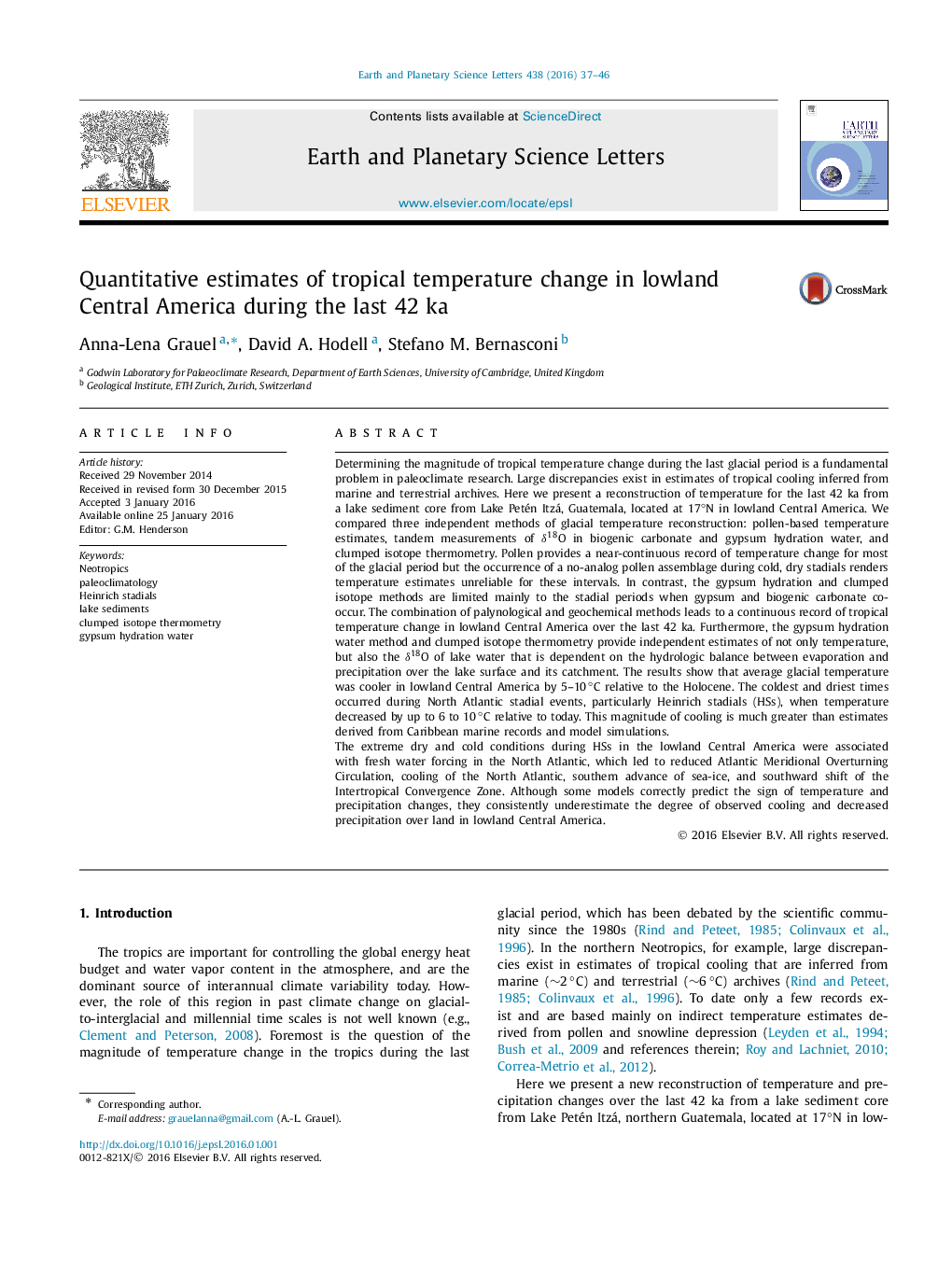| کد مقاله | کد نشریه | سال انتشار | مقاله انگلیسی | نسخه تمام متن |
|---|---|---|---|---|
| 4676932 | 1634718 | 2016 | 10 صفحه PDF | دانلود رایگان |
• Continuous temperature record of lowland Central America over the past 42 ka.
• Comparison of three independent methods of glacial temperature reconstruction.
• Temperature decline much greater during Heinrich Stadials than previously assumed.
• Temperatures considerably colder than inferred from adjacent marine records.
• Coldest and driest conditions of the last glacial during Heinrich Stadial 1.
Determining the magnitude of tropical temperature change during the last glacial period is a fundamental problem in paleoclimate research. Large discrepancies exist in estimates of tropical cooling inferred from marine and terrestrial archives. Here we present a reconstruction of temperature for the last 42 ka from a lake sediment core from Lake Petén Itzá, Guatemala, located at 17°N in lowland Central America. We compared three independent methods of glacial temperature reconstruction: pollen-based temperature estimates, tandem measurements of δ18O in biogenic carbonate and gypsum hydration water, and clumped isotope thermometry. Pollen provides a near-continuous record of temperature change for most of the glacial period but the occurrence of a no-analog pollen assemblage during cold, dry stadials renders temperature estimates unreliable for these intervals. In contrast, the gypsum hydration and clumped isotope methods are limited mainly to the stadial periods when gypsum and biogenic carbonate co-occur. The combination of palynological and geochemical methods leads to a continuous record of tropical temperature change in lowland Central America over the last 42 ka. Furthermore, the gypsum hydration water method and clumped isotope thermometry provide independent estimates of not only temperature, but also the δ18O of lake water that is dependent on the hydrologic balance between evaporation and precipitation over the lake surface and its catchment. The results show that average glacial temperature was cooler in lowland Central America by 5–10 °C relative to the Holocene. The coldest and driest times occurred during North Atlantic stadial events, particularly Heinrich stadials (HSs), when temperature decreased by up to 6 to 10 °C relative to today. This magnitude of cooling is much greater than estimates derived from Caribbean marine records and model simulations.The extreme dry and cold conditions during HSs in the lowland Central America were associated with fresh water forcing in the North Atlantic, which led to reduced Atlantic Meridional Overturning Circulation, cooling of the North Atlantic, southern advance of sea-ice, and southward shift of the Intertropical Convergence Zone. Although some models correctly predict the sign of temperature and precipitation changes, they consistently underestimate the degree of observed cooling and decreased precipitation over land in lowland Central America.
Journal: Earth and Planetary Science Letters - Volume 438, 15 March 2016, Pages 37–46
